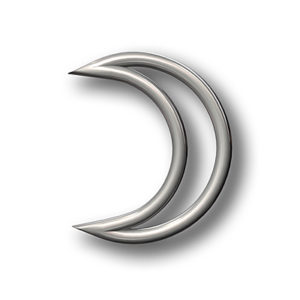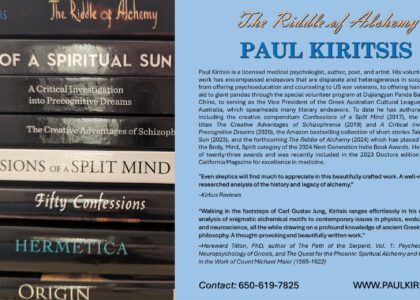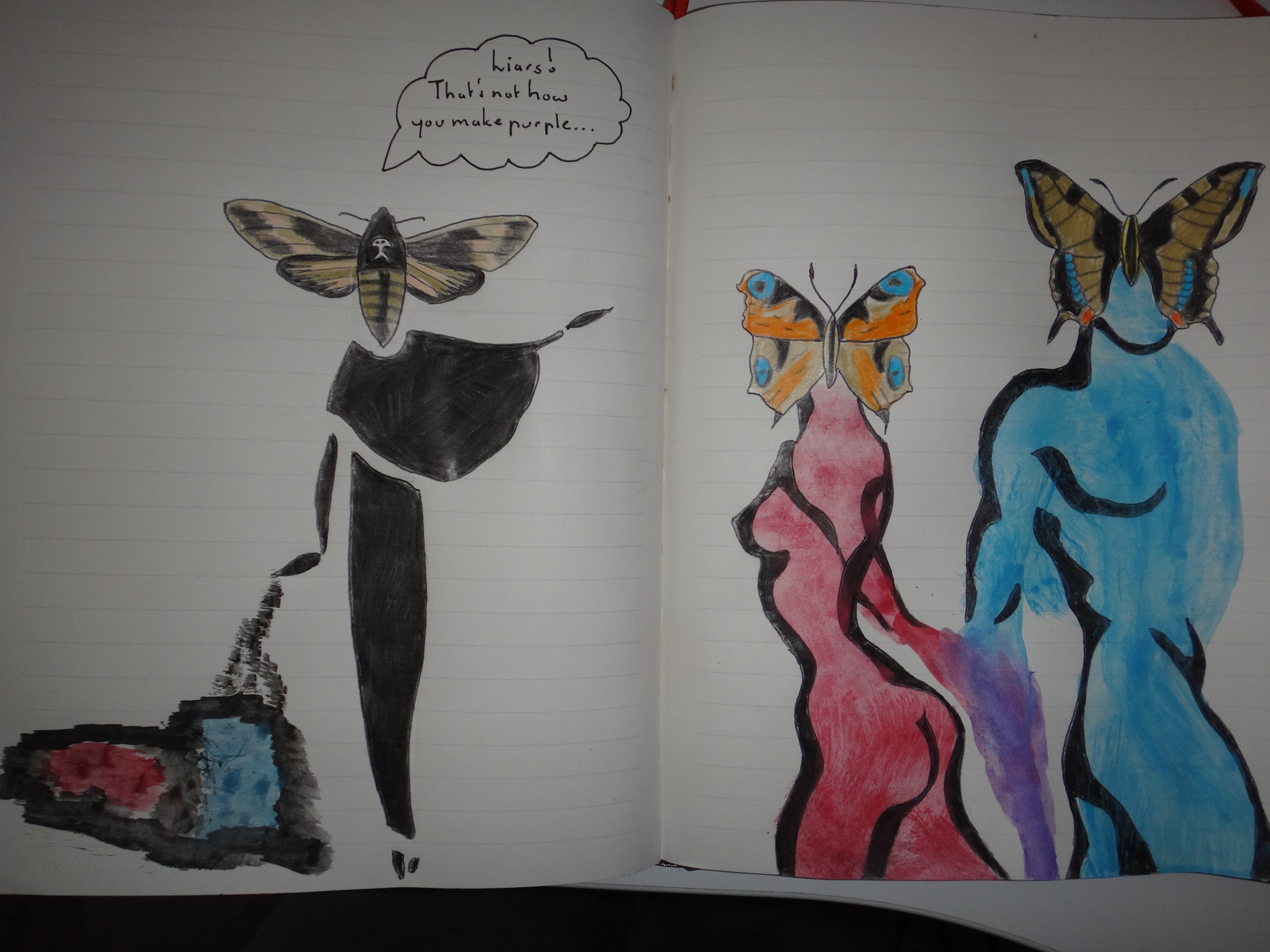
At the lowermost point of the ethereal cosmological ladder lies the passive, feminine pole. Anyone can penetrate the veil of corporeal appearances and see as well as understand the cosmological truths directly beneath by studying two intimately connected features–a primary source of light and its reflecting or refracting surface. The sun, for example, expresses the central qualities of the active, masculine pole; it is a material, superior manifestation of incarnated light, intellect and pure essence. Just like the great solar orb in the cupola of the heavens, the uppermost echelon of the cosmological totem pole, the masculine aesthetic mode of being, remains eternally rigid and supernally bright. On the contrary the lowermost echelon of the cosmological ladder, the feminine aesthetic mode of becoming, is in an unstable state of continuous flux. It is formless yet forming, colourless yet colourful. This pole is a guise, a face of the prima materia, the jelloid substance of which the entire cosmos has been hewn. The prima materia’s primary feature is to reflect, or to imprint and embody the natural forms imposed upon it. For that reason its corporeal counterparts are the moon (active materialisation) and the metal silver (passive materialisation). Both the moon and silver are sensitive, impressionable and receptive bodies, passively reflecting and forming colourless images from external sources of light. Radical thinkers of the likes of Frau Lily Kolisko, a student of anthroposophist Dr. Rudolph Steiner (1861-1925), was able to methodologically demonstrate a qualitative connection between the lunar orb and the metal silver through a chromatographical method which aimed to register changes in chemical reactions of the latter during eclipses, as well as planetary conjunctions and oppositions made by the former with another planetary sphere.
All symbols for the seven generative powers which comprise the cosmological totem pole, the multidimensional ladder which extends from the Empyrean of God, the highest heaven, all the way down to the sphere of earth and dross matter, are cut from three rudimentary shapes: the circle, the semicircle and the cross. The second of these symbols, the semicircle, is identified with the lowermost echelon of the cosmological totem pole, the feminine aesthetic principle or pure receptivity itself. Hence as an expression of the lunar cause, it is also a pictogram for material manifestations that have been linked with it, explicitly the moon and the metal silver. All created matter that is preponderated by a strictly polarised feminine aesthetic energy liquefies any unique materialising combinations harnessed by the four ethereal elements. The logic behind this supposition lies in the logic that the feminine aesthetic is pretty much a synonym for the prima materia, an entity which exists without form like water and liquid mercury. In alchemy, the concept was exemplified by the figure of a queen.
As a metal, silver has been identified, mined and used for practical purposes since about the fourth millennium bce. It appears to have enjoyed its heyday under the aegis of classical Greece and Imperial Rome, both of which encompassed a deep knowledge of its inherent properties and flexibility of use. Silver was used in the fabrication of the first coins, but also as an agent for purifying water and preventing contagion of food and beverages. During the eighth century, the Arab alchemist Jabir ibn Hayyan revolutionised its use by generating its first metal salt, silver nitrate. During the Middle Ages the occult enterprises (i.e. magic, alchemy, astrology) slithered their way into conventional European cosmogony from the periphery, together with the laws of sympathy, antipathy and correspondence to which they all ascribed. Silver’s association with the moon and with the sublunary realm of generation lay at the heart of the earliest homeopathic remedies; if the lunar sphere presided over healing, then it was only natural that silver, its corporeal manifestation, could be concentrated into a solution and administered to cure ailments of the brain, for epilepsy and vertigo, and to accelerate remedial action on bodily wounds and burns. Working on such premises, many Middle Age and Renaissance alchemists mixed silver nitrate with opium, musk and camphor in their home laboratories to create a therapeutic tincture known as pilulae lunaris, or Pills of the Moon, which they prescribed to patients suffering from the abovementioned ailments.








